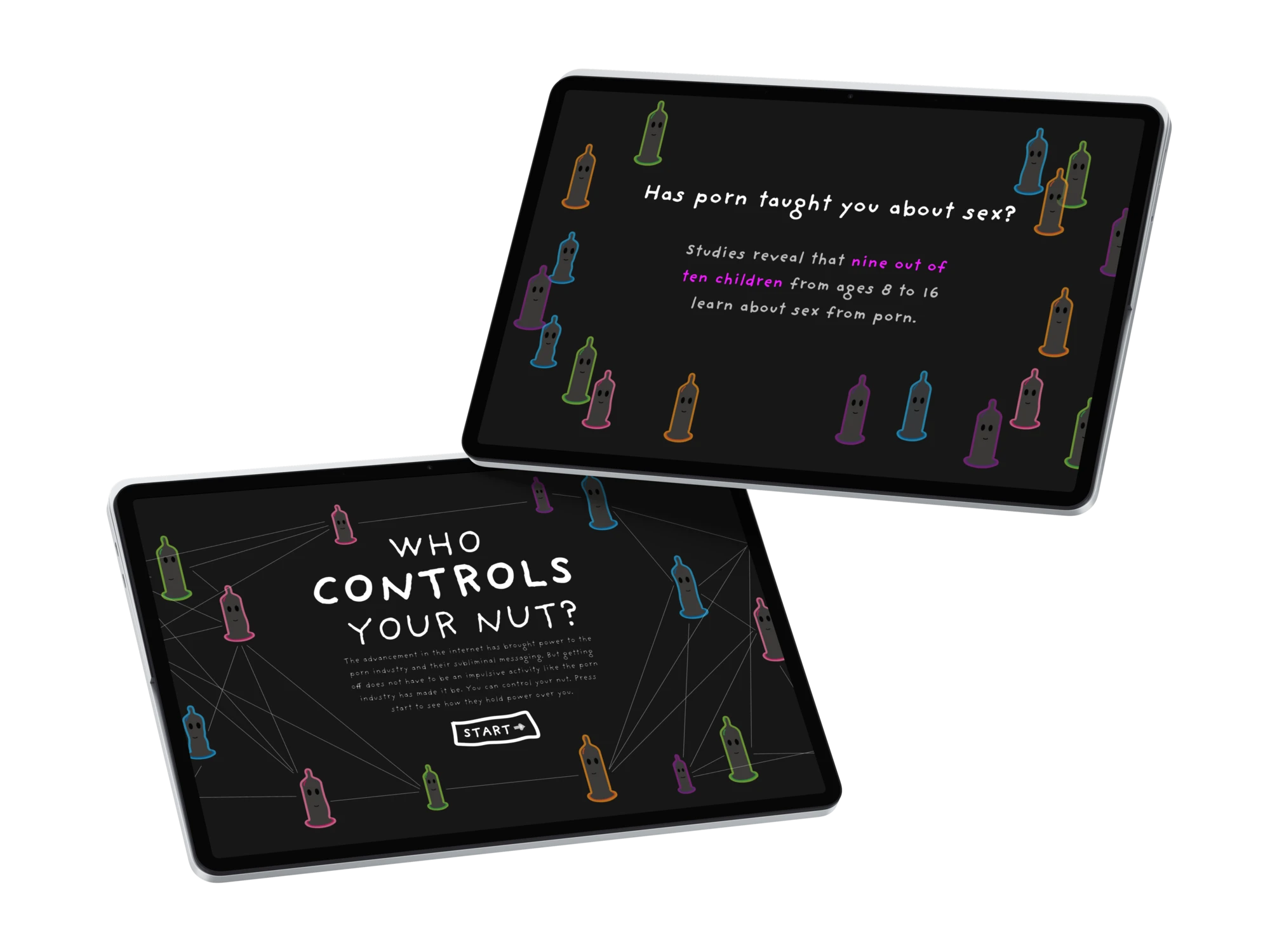Mozilla Internet Health Report
UX Design
Project Overview
Objective
As part of a University project the objective was to create an interactive data visualisation on the topic of internet health with the intention of mobilising the public into taking action for positive change. This was in collaboration with Mozilla and their Annual Internet Health Report.
Info
Team: Sole UX designer & Researcher
Duration: Two Months
Tools: Adobe After Effects, Illustrator and XD
Type: University project in partnership with Mozilla
Goals
- Educate the public - Present complex, sensitive information about the porn industry’s societal impact in an accessible way
- Encourage action - Motivate users to reflect and contribute towards positive change in internet health
- Foster community - Create a sense of solidarity by showing users their experiences alongside others’
- Ensure anonymity - Protect user identity to encourage honest participation
- Engage through interactivity - Use a game-like format to make the topic approachable and memorable
Challenges
- Sensitive subject matter - Designing interactions that are respectful yet impactful.
- Balancing openness and privacy - Maintaining user trust through robust anonymity features.
- Data handling - Presenting live, anonymised responses clearly and meaningfully.
- Time constraints - Designing, testing, and developing within the project deadline.
01 - Discover
As part of a collaboration with Mozilla’s Annual Internet Health Report, I set out to explore how to present complex, sensitive topics in an engaging way that could inspire positive change. I began by researching potential focus areas within internet health and identified the porn industry as a case study due to its wide reach, cultural influence, and societal debates.
To understand the audience, I created user personas for both primary users (individuals with direct personal interest or experience) and secondary users (those seeking broader understanding of the issue). I also reviewed Pornhub’s annual reports, a widely cited industry dataset, to establish trends and patterns that would inform the design direction.
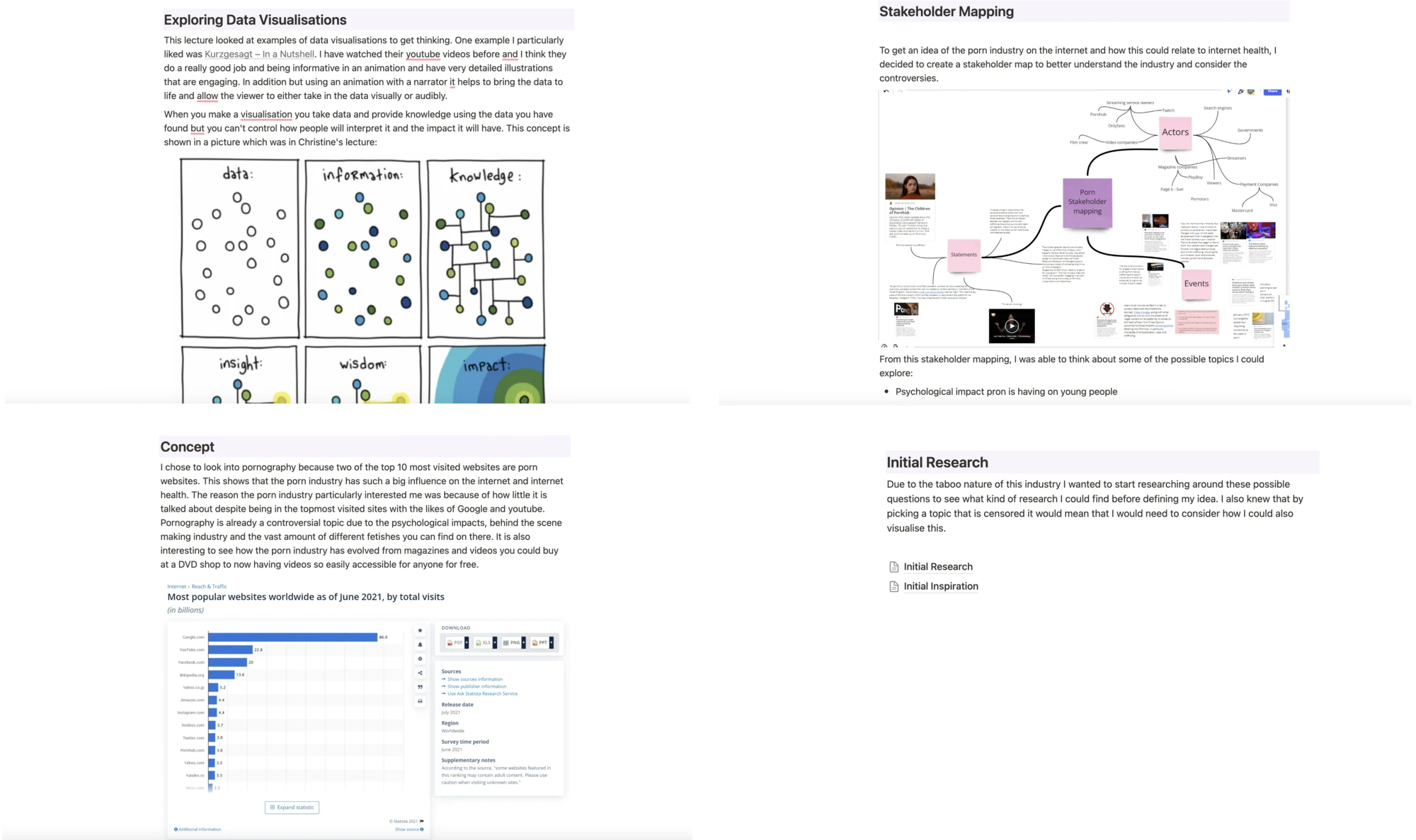
02 - Define
From my research, the objective became clear: to design an interactive data visualisation that educates, encourages reflection, and motivates action, all while respecting user privacy.
To validate assumptions and gain real user insight, I created a short, anonymous survey on porn usage. This not only gathered quantitative data but also highlighted recurring themes in user sentiment, which informed both tone and content. The findings reinforced the need for anonymity as a central design requirement.
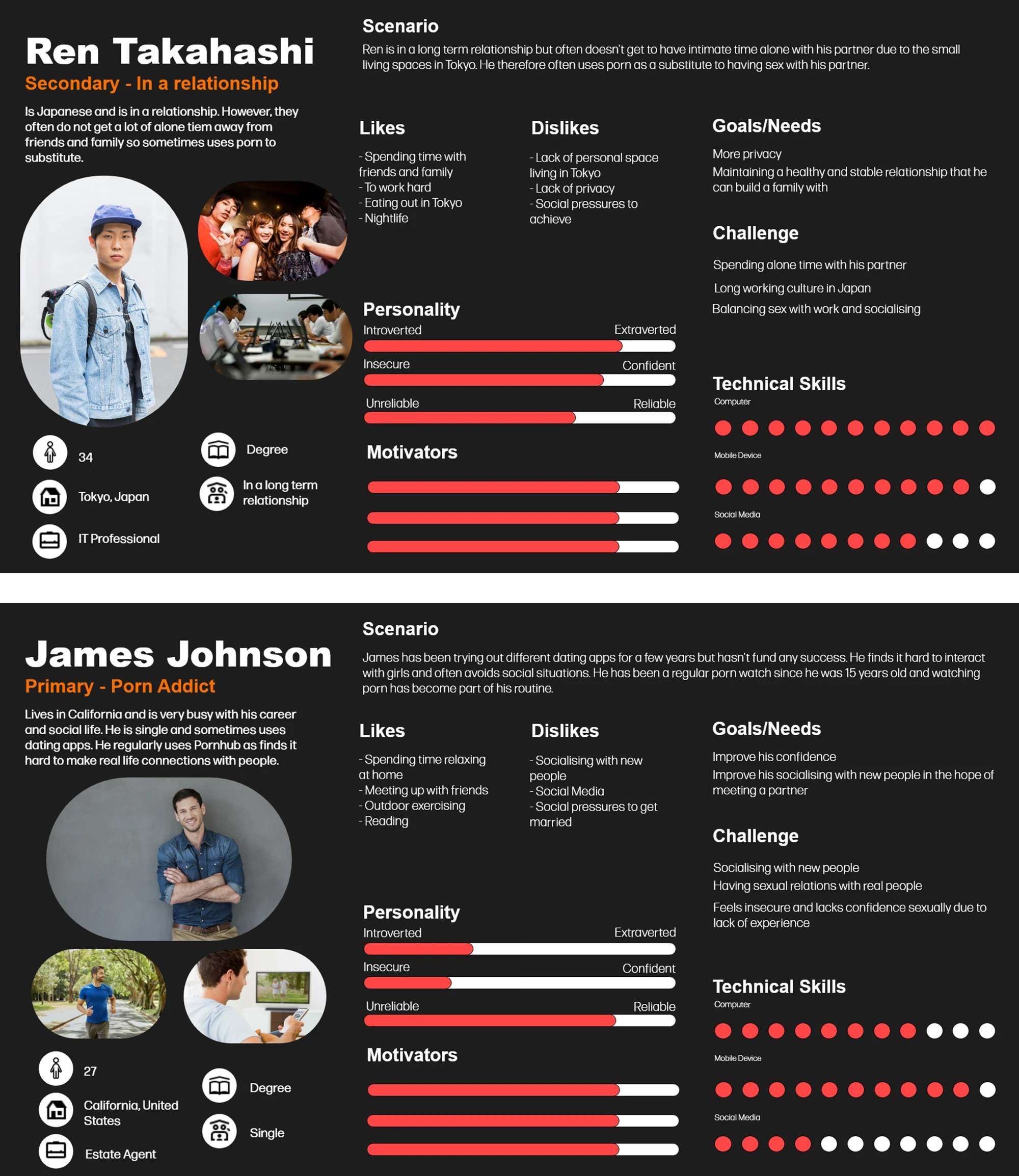
03 - Develop
I began with wireframes that mapped the flow of an educational game, starting with facts and context before moving into personalised, reflective prompts.
The game then asked users a series of sensitive questions, with their anonymised responses visualised alongside the last 15 participants to foster a sense of solidarity.
Using Adobe XD, I developed interactive prototypes and ran scenario testing to evaluate usability, emotional impact, and clarity of data presentation. Feedback from these sessions led to iterative refinements in the visual design, navigation, and the way anonymised data was displayed to ensure both engagement and trust.
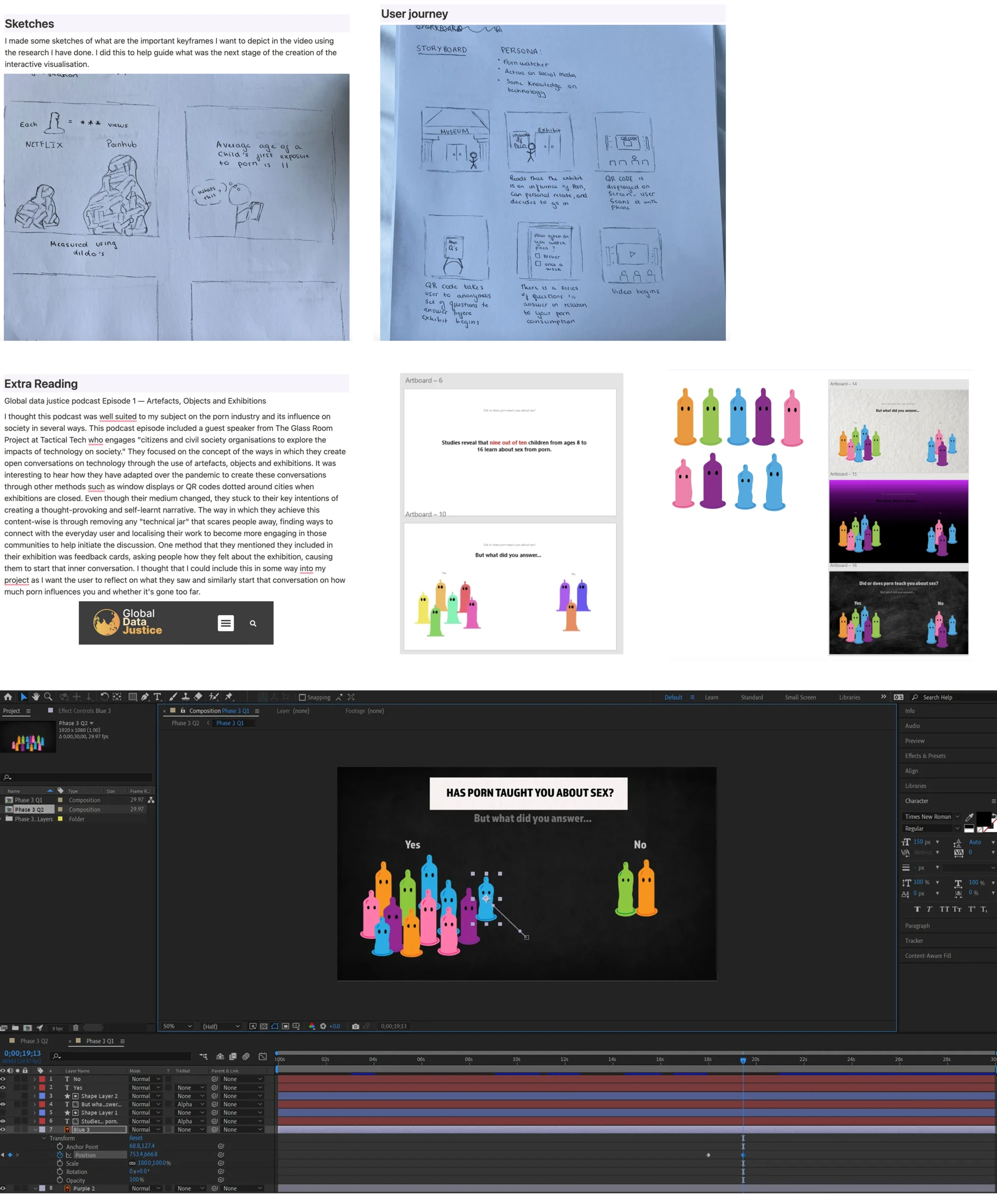
04 - Deliver
The final outcome was a web-based interactive experience combining educational content, reflective questioning, and live, anonymised data visualisation. By integrating sourced industry data with real-time user contributions, the experience created a space for users to see themselves as part of a wider conversation.
Playful yet respectful interface design made the subject approachable while maintaining credibility and sensitivity. The anonymity features proved essential in fostering honest engagement.
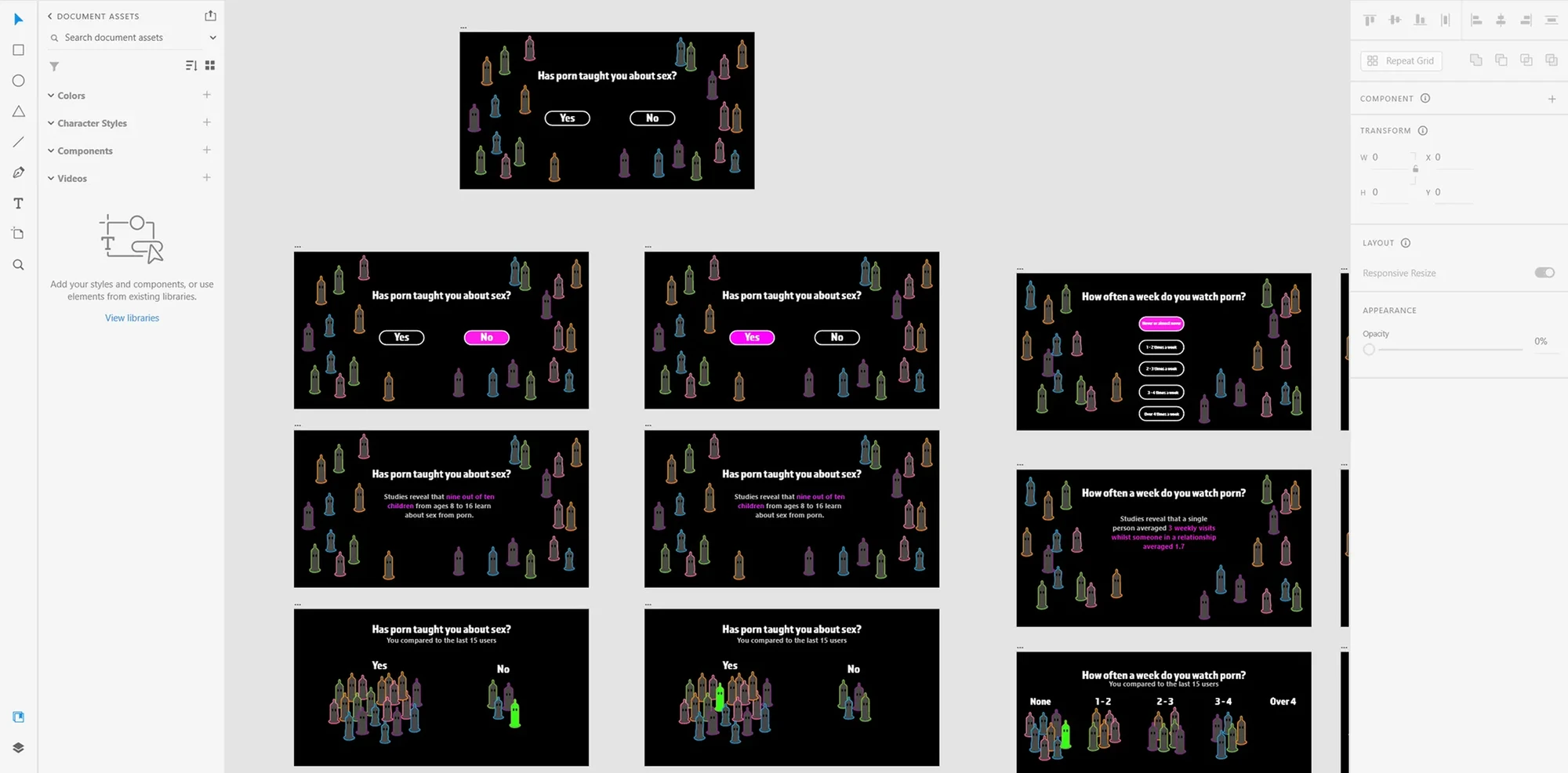
05 - Reflection
The project met its goal of turning a complex, sensitive internet health topic into an accessible, thought-provoking experience. Working with personas, anonymous surveys, and industry data was key in grounding the design in real-world insight.
My biggest learning was the critical importance of privacy and anonymity in encouraging open user participation. If taken further, I would expand the dataset to include more diverse demographics, conduct deeper interviews with both primary and secondary users, and continue iterating based on broader scenario testing to enhance both reach and impact.
